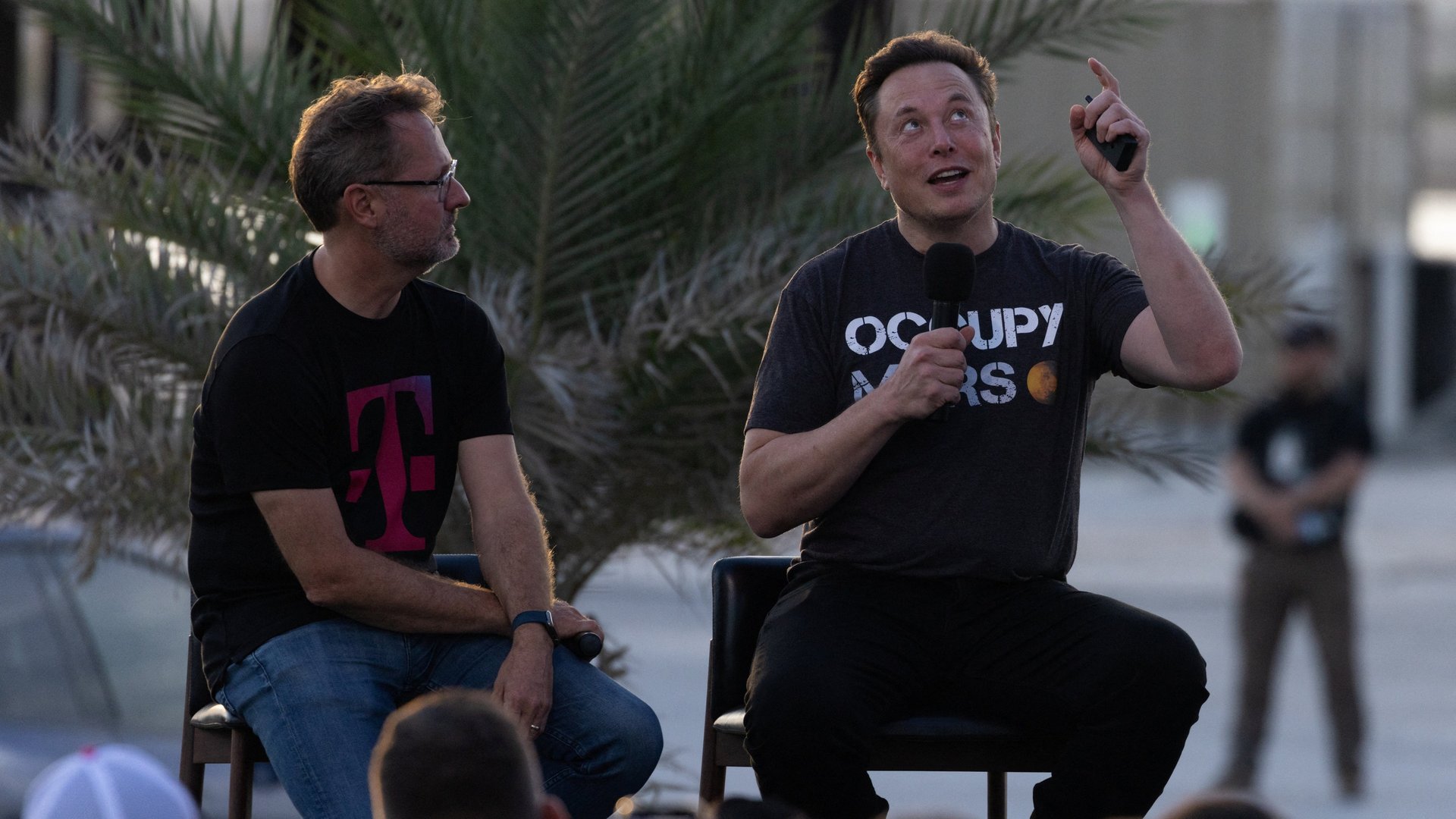The problems with Elon Musk's satellite phone plan
Musk has once again bitten off a massive technical challenge with a short timeline

Get ready for the rocky road to satellite phone ubiquity.
The news that SpaceX and T-Mobile are partnering to plug the average mobile phone into a satellite communications network won’t be the last such announcement. On Sept. 7, Apple is expected to announce that its iPhones will connect to a satellite constellation operated by GlobalStar. And a start-up called AST SpaceMobile plans to launch satellites next year that could give similar access to partners including Vodafone.
The hasty announcement at SpaceX’s test facility in Texas was notable for its lack of detail and Elon Musk’s fretting that the public wouldn’t understand the importance of the project. T-Mobile CEO Mike Sievert noted repeatedly “this is not a product announcement.” To help clarify, here’s the state of play.
Why connect mobile phones into satellite networks?
Coverage in remote areas. Mobile phone towers in densely populated places have made high quality connectivity ubiquitous. When you get beyond them, however, satellites can make sense. Most dedicated satellite phones are fairly large, expensive, and reserved for extreme situations: Aid workers in remote parts of poor countries, scientists in Antarctica, or workers on oil rigs. The presentation last night included lots of talk about people on remote ranches or with hobbies that take them out into the wilderness. The sales pitch is that you never have to worry about losing service.
What makes connecting phones to satellites hard?
Distance and power. Your mobile phone is designed to talk to cell towers within about 10 km (6 mi). Satellites are going to be 500 km away from you, and moving at more than 17,000 mph. Customers for Starlink, SpaceX’s internet satellite network, connect using a base station that is 20 inches by 12 inches. To make that connection work without enlarging the phone in your pocket, the satellites in question need to have antennas capable of detecting a very faint signal. This is technically possible—Musk says that they can do it in the lab—but it requires a large antennae. AST SpaceMobile’s satellites were initially so large that NASA worried they might increase the risk of orbital collisions.
The other challenge is finding some electromagnetic spectrum, a chunk of radio wave frequencies, that you can use to transmit back and forth. The key news last night is that T-Mobile will share some of the frequencies it is licensed to use with SpaceX to enable connections between its phones and the spacecraft.
Will this really happen by next year?
There are a number of obstacles in the way of making the T-Mobile/SpaceX plan work. Musk says that the satellites that will be used, known as the second generation Starlink satellites, will be redesigned with new antennas that will use T-Mobile’s spectrum. But the Federal Communications Commission, which regulates satellites in the US, has not yet approved the first design of these spacecraft, and SpaceX has not updated its filings to reflect any changes to them.
And these second generation Starlink satellite are already quite big, to the point where SpaceX will need to launch them into space with Starship, a rocket that hasn’t actually gone into orbit yet. The path from that first flight of Starship into space to flying it with regularly enough to put sufficient new satellites on orbit that can link with T-Mobile will be a long one even if everything goes according to plan, a rarity in rocket development.
What about Apple’s satellite phone plan?
There’s a sense in the industry that this announcement was intended to preempt Apple’s news. While Apple won’t respond to questions about the project, leaks from inside the company suggest it has been working on adding satellite links to iPhones for several years now. At the same time, the satellite operator GlobalStar has disclosed in financial filings that a “large, global customer” is partnering with it on a new communications network, and this customer paid $300 million so it could buy 17 new satellites. There aren’t many companies that can throw around that kind of investment, so all eyes are on Apple. Oh, and the company is promoting its event on Sept. 7 with space-themed advertising.
If the rumors are true, Apple will likely be able to offer satellite connectivity immediately, probably limited to text and slower internet connections. And, as its name suggests, Globalstar has spectrum rights all over the world, not just in the US like T-Mobile, so international customers might immediately have access.
Is this worth it?
The average mobile phone customer doesn’t have a ton of time outside the service area, and it’s interesting to think about whether the millions of dollars of investment required to make satellite linkages happen will pay off for handset manufacturers and telecom firms. There’s a clear marketing angle on display, with Mike Sievert painting this partnership as part of his company’s “uncarrier” brand. Having Elon Musk’s name on something has (at least in the past) proven to attract a certain type of customer. For Apple, satellite connectivity could help the firm continue to demonstrate that the iPhone is the most technologically desirable handset on the market.
For SpaceX, the partnership represents much-needed revenue for its expensive Starlink project. Slowing customer growth in the high-adopting areas in the US, combined with slower uptake abroad, make a telecom partner with an existing customer base attractive. And for GlobalStar, a successful partnership with Apple would represent a big payoff for a firm that has never really succeeded financially as a satellite operator.
